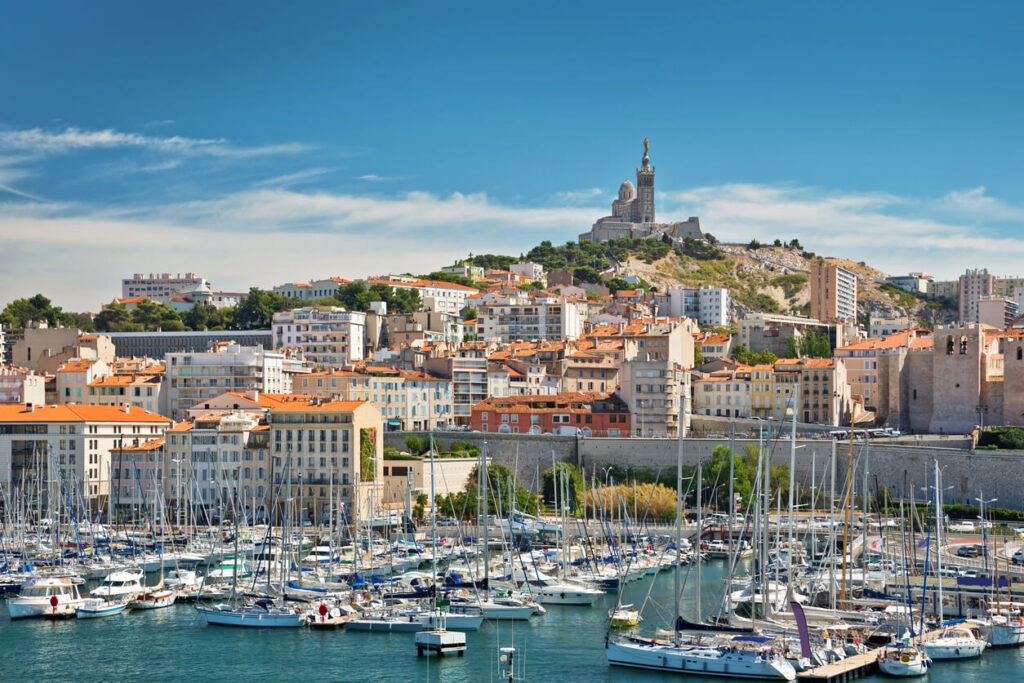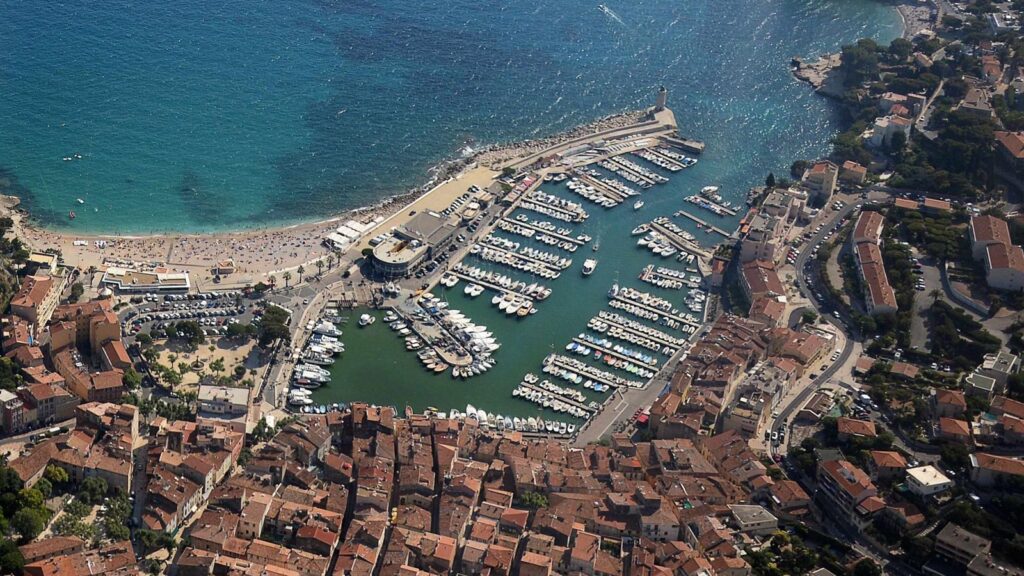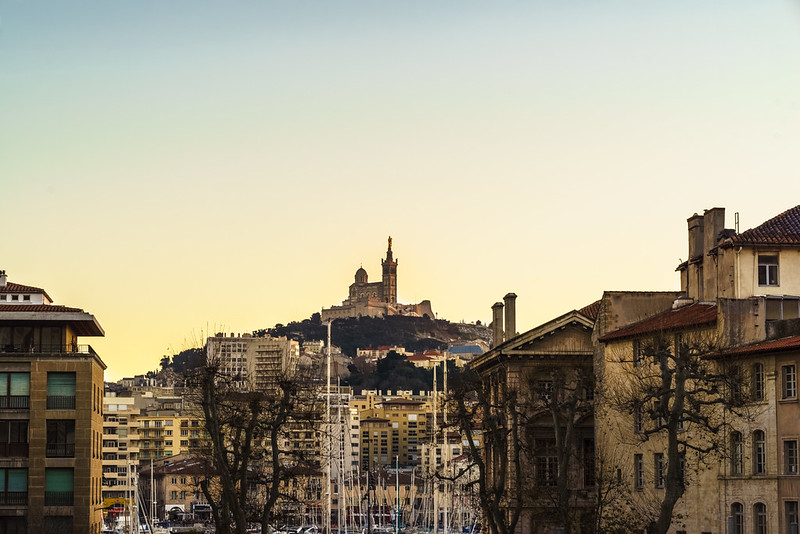Articles, Communications
Marseille, a proud and mixed-race city
Article author: Tristan Semiond
Date of publication of the article: 12/05/2022
Year of publication: 2022
Article theme: Culinary, Europa, History, Patrimonio.
At a time when the world is closing in on the “other”, and identities are becoming more and more essentialist and exclusive, it is interesting to delve into the fabulous history of France’s oldest city, Marseille. The origins of the so-called “focense city” are to be found on another continent – more precisely in Asia Minor – some three thousand years ago. From then on, the destiny and development of Marseille and its basin were placed in the hands of the people who had landed on its shores.
A city born of the marriage of a native and a foreigner
To understand its foundation, one must go back to the shores of present-day Turkey, the stronghold of a Greek people, the Phocaeans. The Focenses, whose capital was the city of Foça, near Smyrna (Turkey), were looking for new places and lands to found new trading posts, called emporia, on the Mediterranean coast. At that time, the Focenses advocated the creation of a commercial network linking the east and west of the Mediterranean Sea. For this reason, they frequently sent sailors aboard rowing boats known for their speed (the pentecontera) to sail and reach the western coasts.
Thus, between the 6th and 7th centuries BC, boats led by Protis from the Turkish coasts of the Aegean Sea set out on this adventure towards the western Mediterranean. They sailed along the waves of the inland sea until one day they stopped at a cove that caught their attention both for its beauty and for its strategic position which, among other benefits, protected it from the strong winds of the region.
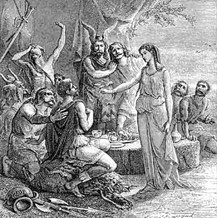 At the time, this cove, untouched by any construction, was home to a local Gallic tribe, the Ségobriges. The Focenses, in their aim to settle in this place, had to gain the trust of the natives. Thus begins the founding myth of the city, a myth that perfectly symbolizes the reality of the city from yesterday to today.
At the time, this cove, untouched by any construction, was home to a local Gallic tribe, the Ségobriges. The Focenses, in their aim to settle in this place, had to gain the trust of the natives. Thus begins the founding myth of the city, a myth that perfectly symbolizes the reality of the city from yesterday to today.
Legend has it that the arrival of Protis coincided with an important event, the wedding of Gyptis, daughter of King Nann of the Segobriges. The Focenses took part in the festivities as a token of friendship.
According to the local customs of the time, it was up to Gyptis to choose her future husband by offering the lucky man a cup full of water. Thus, at the time of the election, Gyptis’ gaze was directed directly towards the Man of the Sea, the “Stranger”. Protis, the captain of the Focenses, then became the husband of Gyptis and received, as a dowry from King Nann, the cove of Lacydon to found a new Greek city.
It was thus that, on the northern shore of the creek of Lacydon, the city of Μασσσαλία (Massalía) was founded. Thus, the marriage between a young Greek adventurer from Anatolia and a beautiful Celtic princess gave rise to the city of Marseilles, as told in the accounts of Aristotle[1] and Marcus Junianus Justinus[2].
Although the historical authenticity and the exact conditions of the city’s foundation are not clear, it is interesting to highlight the importance of this myth in the construction of Marseille’s identity and popular culture. Thus, in the minds of all Marseillais, the founding myth of Marseille is a story of cultural mixing and miscegenation.
Thus, in the minds of all Marseillais, the founding myth of Marseille is a story of cultural mixing and miscegenation.
Although the material remains of this era are unfortunately scarce, the same cannot be said of the intangible cultural heritage, since mentalities have been shaped by this unique heritage in which the sea occupies a central place in the hearts of all inhabitants as a symbol of wealth, freedom and hospitality.
Marseille, a city looking towards the sea and not to the land
For more than 2,600 years, the city of Marseille has become a city of refuge, a global city, for all the peoples of the earth. In other words, the people of Marseille have always considered it to be a city that has never belonged to anyone and has always belonged to everyone.
The collective imagination of Marseille has been built on this identity of a rebellious city, singular and proud of its attributes and its particular language, which is nothing less than a sumptuous mixture of the languages of the interior, French and Provençal, and those coming from the sea, such as Italian, Spanish and Arabic.
Its history and heritage largely explain the many specificities of the city, which has always shown a certain opposition to the central Parisian power, preferring to open up to the Mediterranean and abroad.
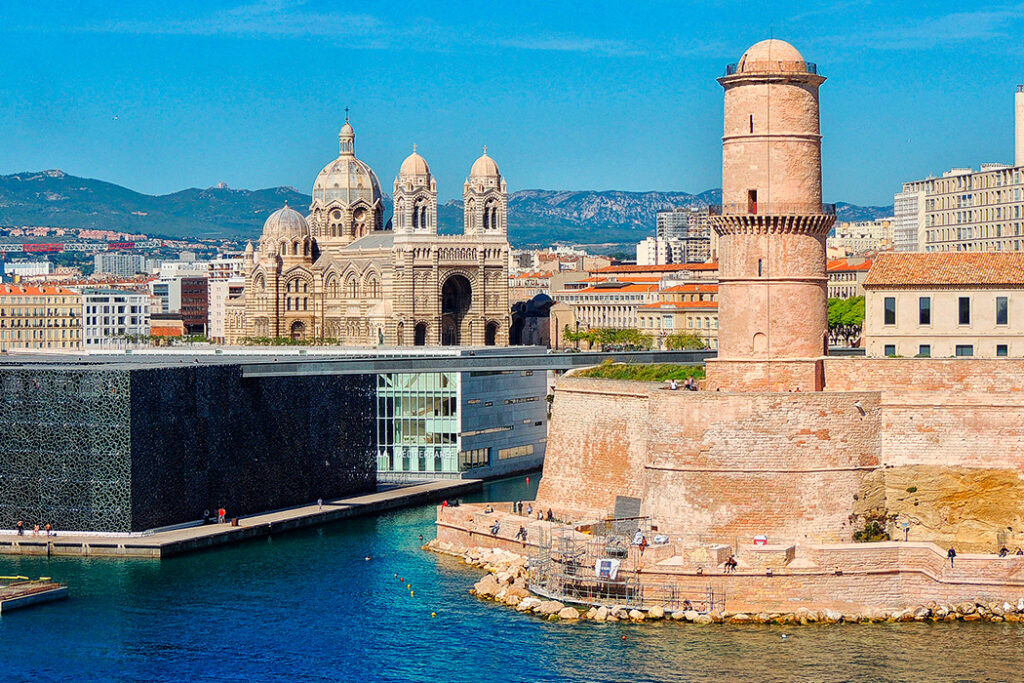
This settlement and its opening to the sea as a commercial port allowed, among other things, the introduction and development of vine and olive cultivation, becoming an important place of exchange and influence between the Mediterranean and the different civilizations.
Research has shown that in the Middle Ages there was an Arab-Islamic presence in the city. For example, a kiln of Islamic technology dating back to the 12th century was recently discovered in the potters’ quarter[3]. One can imagine that it was used to produce Islamic-style pottery. This transfer of knowledge raises many questions, but the presence of a tomb of Islamic character and several Arabic inscriptions on pieces found in the city contribute to the hypothesis of the presence of a Muslim community in the city at the time[4].
Research has shown that in the Middle Ages there was an Arab-Islamic presence in the city. For example, a kiln of Islamic technology dating back to the 12th century was recently discovered in the potters’ quarter.
While this multicultural heritage is not visible in the city’s architecture, its intangible character is clearly perceived. Strolling through the Old Port – the heart of the city -, the Cours Belsunce or the Quartier de la Plaine, one can appreciate the diversity of smells, products, accents and languages of a city that, like the Tower of Babel, is a representation of the history of the diversity of languages and peoples, in other words, a sort of melting pot of humanity.
These thousand and one identities of Marseille are the result of migration, which has always played an important and essential role in the development of the city. Thus, to be a Marseillaise is, in a way, to have been welcomed, which gives rise to a feeling of global belonging, without borders, and which in many cases allows one to develop a certain sensitivity and empathy towards the misfortunes of others. The fact that SOS MEDITERRANEE has chosen the city of Marseille as its headquarters may be one of the many symbols of this, as they strive daily to find destinations to welcome people who risk their lives crossing the sea in search of a better future.
Marseilles, a city where people have always been welcomed…
While Marseille has a particularly important history of welcome and hospitality that should serve as a model, the city’s origins should not be forgotten by its political leaders, as unfortunately they are increasingly so.
In the 20th century numerous people fleeing war, repression and/or misery were able to find refuge in the city. Italians who fled Mussolini’s fascism; Russians, from Stalinism; Armenians, from the massacres that took place during the First World War in the Ottoman Empire….
Journalist Albert Londres, one of the pioneers of investigative journalism, described the Marseilles of the 1930s in this way:
“I do not know the coat of arms of Marseilles, but I know what it must consist of, a door. […] a monumental door through which the hundred faces of the vast world would flow…”[5]
After World War II, like Protis, thousands of people crossed the Mediterranean to Marseille to take advantage of the employment opportunities of the time. In fact, France set up an organized system of voluntary immigration between the 1950s and 1970s, and tens of thousands of people from the Maghreb, as well as French born in Algeria, Tunisia and Morocco, disembarked at the new port and settled in the city.
…and where their products and cultures have always flourished…
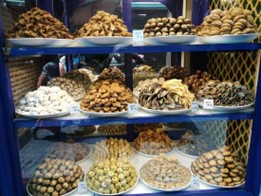 Marseille has also been the gateway for many products that changed the French culinary culture. From eggplants, tomatoes and zucchini to oranges, bananas and, of course, dates, many products were introduced into the local gastronomy from the port of Marseille.
Marseille has also been the gateway for many products that changed the French culinary culture. From eggplants, tomatoes and zucchini to oranges, bananas and, of course, dates, many products were introduced into the local gastronomy from the port of Marseille.
Preserving one’s own culture and identities, but also sharing and enriching them with others, are phenomena that make interculturality socially important to avoid social exclusion. Marseille can be considered an example in this respect, and the culinary practices, which are of course part of this cultural heritage, beautifully illustrate this Marseille interculturality. This mix of cultures gives rise to a wide variety of Marseille dishes: mafé, different couscous, tajine, or the mythical bouillabaisse, among others.
You only have to stroll through the city and cross the Noailles district and its famous market “des capucins” to realize this incredible culinary diversity. In the bowels of the city there is nothing one cannot find, and the language of the visitor or newcomer has never been a barrier to shopping. If a person pays attention, he or she can hear people speaking French, Arabic, Italian, English, Wolof or Shikomori …..
One can also find different restaurants or producers serving a tchicha or a chorba, or Algerian crepes such as mahjouba, as well as Italian or Sicilian stores selling delicious ricotta, and if one is in the mood for something sweeter, the streets are dotted with small stores with Marseillaise specialties such as navettes or calissons, as well as halva or gazelle horns, which adorn the windows of many bakeries.
In the shadow of the sun and wealt, poverty and its scourges
Although the sun illuminates the city of Marseille more than 300 days a year and the splendid Roman-Byzantine basilica of Notre-Dame de la Garde distributes the “baraka” to all its inhabitants, unfortunately, the city also harbors a hidden face, poverty: the Belle de Mai district is the poorest in Europe.
In this sense, there is a real invisible border between a working-class North and a bourgeois, commercial and liberal South. A border drawn by history, but above all by the post-war urban planning policies that grouped in huge blocks of apartments all the population, mostly foreigners, who came to work in the large factories of the Marseille basin.
As mentioned above, during the economic recovery after 1945 and following the wars of liberation, there were many population movements, especially between Algeria and France. In 1962, for example, nearly 800,000 people arrived in Marseille in the weeks following Algeria’s independence. At first housed in makeshift shelters and shantytowns, these new arrivals were soon housed in new neighborhoods that would become known as the “Quartiers Nord (northern districts).”
The full employment of the time allowed a cultural bubbling while these neighborhoods were the breeding ground of Marseille’s youth and its future. However, they soon became the first and main victims of the economic crisis of the 1970s and 1980s.
This context has unfortunately led to an increase in delinquency in these neighborhoods due to a real neglect by the public authorities. This situation has led to a position of withdrawal, favored by the anchoring of discourses in the public and media sphere that dismiss and discard all the social reasons for the problems existing in these neighborhoods in favor of simplistic, racist, Islamophobic and culturalist arguments. Thus, the press speaks of non-integration instead of the explosion of unemployment, inequalities, social reproduction, discrimination… It should be recalled that social problems are not problems linked to diversity, on the contrary, there is no causal relationship.
The cultural resistance of Marseille
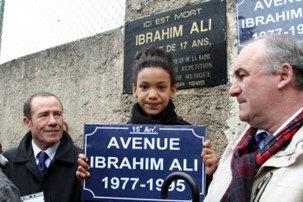 The rise of racism, however, has also led to a resurgence in the collective imagination of the cosmopolitan and hospitable history of the people of Marseille. Nothing reflects this better than urban culture, and especially Marseille rap, which has helped bring Marseille back into the limelight and given a microphone to those who previously had no voice, allowing them to show their reality and challenge the authorities. And who better than the rappers themselves, these modern poets, to describe this city and its beauty:
The rise of racism, however, has also led to a resurgence in the collective imagination of the cosmopolitan and hospitable history of the people of Marseille. Nothing reflects this better than urban culture, and especially Marseille rap, which has helped bring Marseille back into the limelight and given a microphone to those who previously had no voice, allowing them to show their reality and challenge the authorities. And who better than the rappers themselves, these modern poets, to describe this city and its beauty:
“When we look at a mosaic, we look at it closely […], we only see stone tiles of different colors; we step back, we take about twenty steps back and what the mosaic represents is revealed to us. For me, that’s Marseille; if you look too closely, you only see separate tiles of different colors; when you take a step back, you see the whole and the whole is magnificent.” Akhenaton, singer of the Marseille group IAM
In short, the beauty of Marseille is not in the integration of the populations, so dear to the advocate of universal assimilation, but in the fact that everyone comes together, learns from each other, making the word “foreigner” a foreign word in Marseille.
The Focese city, which in 2013 inaugurated the Museum of the Civilizations of Europe and the Mediterranean (MUCEM), has finally become aware of this important heritage and invaluable history, offering it a space of its own with the aim of thus creating a bridge between civilizations towards peace.
Tristan Semiond – FUNCI
References
[1] Aristote « La Constitution de Marseille », dans Athénée, Deipnosophistes (livre XIII, fragment 576a).
[2] Justin, Abrégé des histoires philippiques, « La Fondation de Marseille », XLIII, 3
[3] Marc Terrisse, « La présence arabo-musulmane en Languedoc et en Provence à l’époque médiévale », Hommes & migrations, 1306 | 2014, 126-128.
[4] Ibid.
[5] Marseille, porte du sud, 1927, coll. « Motifs », Le serpent à plumes, 1999.


